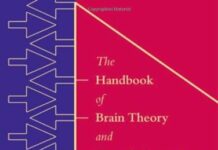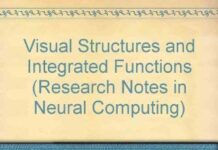
Ebook Info
- Published: 2001
- Number of pages: 380 pages
- Format: PDF
- File Size: 36.32 MB
- Authors: Michael A. Arbib
Description
Computing the Brain provides readers with an integrated view of current informatics research related to the field of neuroscience. This book clearly defines the new work being done in neuroinformatics and offers information on resources available on the Web to researchers using this new technology. It contains chapters that should appeal to a multidisciplinary audience with introductory chapters for the nonexpert reader. Neuroscientists will find this book an excellent introduction to informatics technologies and the use of these technologies in their research. Computer scientists will be interested in exploring how these technologies might benefit the neuroscience community.An integrated view of neuroinformatics for a multidisciplinary audienceExplores and explains new work being done in neuroinformaticsCross-disciplinary with chapters for computer scientists and neuroscientistsAn excellent tool for graduate students coming to neuroinformatics research from diverse disciplines and for neuroscientists seeking a comprehensive introduction to the subjectDiscusses, in-depth, the structuring of masses of data by a variety of computational modelsClearly defines computational neuroscience – the use of computational techniques and metaphors to investigate relations between neural structure and functionOffers a guide to resources and algorithms that can be found on the WebWritten by internationally renowned experts in the field
User’s Reviews
Reviews from Amazon users which were colected at the time this book was published on the website:
⭐Understanding the brain is a research project with a very long history – as long as the history of civilization. Despite thousands of years of effort, it has only been within the last two decades that “understanding the brain” has more than a mythical or philosophical meaning.The reason for this is the computer. Just as physics changed from an essentially mediaeval natural philosophy to a modern science through photography, so neuroscience has only come into being through the use of computers. I am not suggesting this in a metaphorical sense. Human brains do not function like computers. But computers have provided a way of modeling processes of nervous systems with increasing verisimilitude.Consider a phenomenon that exists within at least 12 orders of magnitude; that has an evolutionary history of several billion years; that embraces information from elementary particle physics to cell biology to physiology to psychology to sociology to cosmology (and I am leaving out many other, no less instrumental studies, e.g. linguistics, literature, art) . Consider that no model of this phenomenon has ever survived the age in which it was devised. Consider that even now we do not have an agreed upon terminology for describing its physical characteristics at a gross anatomical level. These are some of the most obvious hurdles that one need overcome if one is to begin “understanding the brain”.Given the astonishing degree of complexity that is the human brain, what is it that is possible with computers that has not been possible before? Computers, and specifically computers used in neuroinformatics, allow us to store, organize and retrieve information. They allow us to build dynamic models, and to test these models with simulated experiments. They allow us, also for the first time in history, to image, in a noninvasive, physiologically tender manner, the workings of living brains. They allow us to talk to one another around the world at any time, in whatever mode of communication is most convenient or salient. But perhaps most importantly, computers provide a tool for grappling with nonlinear causality.When chaos was first observed in a rigorous fashion, it was thought to be an exotic function of complex systems. But take a closer look. Chaos – and nonlinearity- are now known to be fundamental facts of Nature. Nature is more creative than we could imagine.Arbib and Grethe have mapped out a research strategy which is one of the first coherent such strategies in neuroscience. They have taken on the orders of magnitude problem, the multi-discipline problem, the modeling problem, etc. and have provided a trajectory through these problems which permits an organized body of knowledge to be built. For that reason, their book is foundational and generative of neuroscience in a legitimately scientific way. If a theory of the brain is possible, then it will come about somewhat in the manner they have laid out. They have made explicit what has been occult for twenty years.For any student with a serious interest in learning about the brain, this is the book to start with, whether that student is an enthusiastic amateur or a seasoned researcher.
⭐
Keywords
Free Download Computing the Brain: A Guide to Neuroinformatics 1st Edition in PDF format
Computing the Brain: A Guide to Neuroinformatics 1st Edition PDF Free Download
Download Computing the Brain: A Guide to Neuroinformatics 1st Edition 2001 PDF Free
Computing the Brain: A Guide to Neuroinformatics 1st Edition 2001 PDF Free Download
Download Computing the Brain: A Guide to Neuroinformatics 1st Edition PDF
Free Download Ebook Computing the Brain: A Guide to Neuroinformatics 1st Edition




